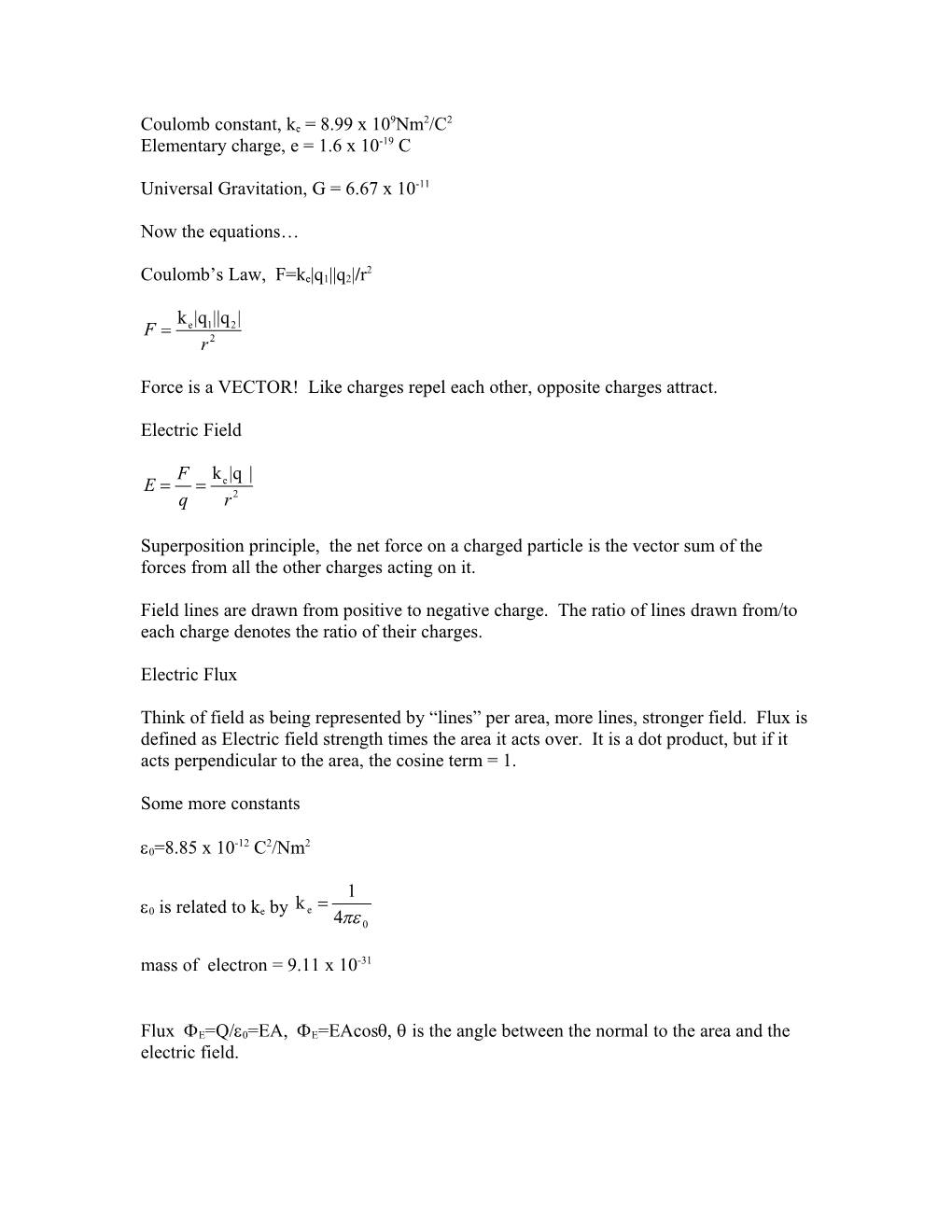Coulomb constant, ke = 8.99 x 109Nm2/C2
Elementary charge, e = 1.6 x 10-19 C
Universal Gravitation, G = 6.67 x 10-11
Now the equations…
Coulomb’s Law, F=ke|q1||q2|/r2
Force is a VECTOR! Like charges repel each other, opposite charges attract.
Electric Field
Superposition principle, the net force on a charged particle is the vector sum of the forces from all the other charges acting on it.
Field lines are drawn from positive to negative charge. The ratio of lines drawn from/to each charge denotes the ratio of their charges.
Electric Flux
Think of field as being represented by “lines” per area, more lines, stronger field. Flux is defined as Electric field strength times the area it acts over. It is a dot product, but if it acts perpendicular to the area, the cosine term = 1.
Some more constants
0=8.85 x 10-12 C2/Nm2
0 is related to ke by
mass of electron = 9.11 x 10-31
Flux E=Q/0=EA, E=EAcosis the angle between the normal to the area and the electric field.
Potential Difference and Capacitance
Electric Potential
Potential Difference between two plates
Electric Field Between two parallel plates
;d is distance between the plates
PE for point charges
Capacitance
Capacitance of a parallel plate capacitor
; A is the area of the plates, d is the distance between
Work = Force times distance, an integral of the dot product in the general case, but we will simplify to;
W=Fdcos, for a particle floating freely in an electric field, the particle moves in the direction of the force. So, even for a curved path, the cos term is one.
Work = Fd, F is the electrostatic force which can be given by F=qE, for a uniform electric field;
W=qEd,
the change in potential energy is PE=qV, and V=-Ed, so …W=-PE
Energy stored in a capacitor
Equivalent Capacitance
Series and Parallel Circuits
Multiple Capacitors can be considered to have one total capacitance, but the total must be calculated differently depending on how the circuit is configured. If they are connected in parallel, the voltage across all capacitors is the same,
V=V1=V2=V3…
Ceq=Qt/V=Q1/V+Q2/V
so the capacitance simply adds;
Ceq=C1 + C2 + C3…
When the capacitors are in series, the charge on all capacitors is the same, voltages add.
Vt=V1+V2+V3…
C=Q/V
V=Q/C
Vt=Q/Ct= Q/C1 + Q/C2
Capacitors disconnected from a circuit retain their charge until reconnected to another circuit or load.
Dielectrics
Dielectrics effectively change the permittivity of the space they occupy
The addition of a dielectric between the plates changes the capacitance of a capacitor.
, where is the dielectric constant, 1.00059 for air, 1 for a vacuum.
A higher value of will cause the voltage across a charged capacitor to drop.
